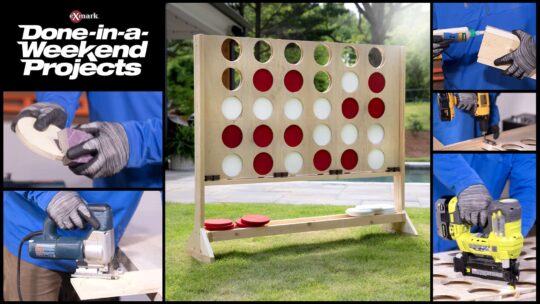Concrete is a resilient material and one that’s often important in bringing our dream backyard spaces to life. It’s also one that needs some upkeep to look good and last a lifetime. So, follow along while Joe Thomas gives you his steps for resealing your stamped concrete to keep it looking beautiful for years to come.
Resealing Your Stamped Concrete
- Power Wash
You don’t want to trap dirt or debris under the sealer, so it’s crucial that you power wash before you begin resealing. Thomas recommends paying close attention to cracks, seams, and edges because they tend to get missed with the power washer. - Fill in the Cracks
Thomas cautions to take your time with this step! You want to be sure that everything is filled and smooth for easy sealer application. There are tons of products out there for this step, but you want to be sure you’re using a product specifically designed for stamped concrete. - Prepare Your Sealer
Thomas works with a five-gallon can of clear, concrete sealer. He suggests going to an expert and asking them to walk you through what sort you’ll need. It’s important that you tell them if any sealers have previously been used on the concrete. Some don’t interact well with one another and can cause some serious problems!
You can purchase color packets for your clear sealer and can play around with creating just the right tone for your stamped concrete. If you have a smooth texture, you can even add in a substance that adds grip to give you some great traction. Thomas recommends this if you’ve got a smooth concrete surface as adding high-sheen sealer to already slick concrete can be dangerous. - Seal the Concrete
This is where the bulk of your work is going to be. Thomas suggests using a small- to medium-sized paintbrush to get all the edges and corners (especially where the concrete meets a step or wall). From there, use a large, thick paint roller on a long pole to apply the sealer. Be sure to start on one side and work your way backwards to avoid painting yourself into a corner.
If you’re thorough and careful on your first run, then you shouldn’t have to proceed with a second coat. Allow your sealer 10-12 hours to fully dry. When you’re all through, it looks as good as when it was brand new!
More Like This:



